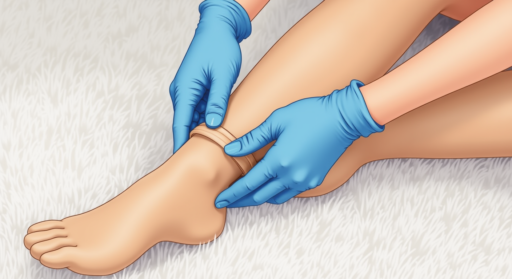Superficial Vein Thrombosis: What It Is and How to Treat It
Have you ever noticed a painful, swollen vein just under your skin and wondered what it could be? You might be dealing with superficial vein thrombosis, a condition where a blood clot forms in a vein close to the surface of your skin. But don’t worry— most cases of SVT are manageable with the right care. Let’s dive into superficial vein thrombosis treatment!
What is Superficial Vein Thrombosis (SVT)?
SVT happens when a blood clot forms in a superficial vein—a vein located close to the surface of your skin. This condition often occurs in the legs and can cause swelling, redness, and tenderness along the vein.
While SVT isn’t as dangerous as a deep vein thrombosis (DVT), it can sometimes lead to more serious problems, especially if the clot extends deeper into the veins. That’s why it’s essential to recognize the signs and take action early.
What Causes Superficial Vein Thrombosis?
Several factors can increase your risk of developing SVT, including:
- Varicose veins
- Injuries or trauma to the vein
- Autoimmune diseases or infections
- Surgery or medical procedures
- Prolonged inactivity, like sitting for long periods
- Certain cancers or blood disorders
What Are the Symptoms of SVT?
Here are some common signs to look out for:
- Redness and warmth along the affected vein
- Pain or tenderness when you touch the area
- Swelling near the vein
- A rope-like lump that you can feel under the skin
If the swelling or redness spreads or you experience intense pain, it’s important to contact your doctor—it could mean the clot is getting worse or extending deeper.
What Are Superficial Vein Thrombosis Treatments?
Most cases of superficial vein thrombosis are treated with simple measures at home, but some may require medication. Here’s a breakdown of the treatment options:
1. Anticoagulant Medication
- Medications like low-molecular-weight heparin (LMWH) or fondaparinux may be prescribed to reduce the risk of clots spreading.
- Newer medications, such as rivaroxaban, can also be used as an alternative.
2. Compression Stockings
- Wearing compression stockings improves blood flow and reduces swelling.
3. NSAIDs (Non-Steroidal Anti-Inflammatory Drugs)
- Over-the-counter pain relievers, like ibuprofen, help ease pain and inflammation.
4. Stay Active
- Gentle exercises, like walking, can help prevent further clots from forming.
5. Local Treatments for Below-the-Knee SVT
- For smaller clots near the surface, heparinoid creams, NSAIDs, or elastic stockings can offer relief.
When Should You See a Doctor?
In some cases, SVT can coexist with deep vein thrombosis (DVT)—a more serious condition. Studies show that about 20% of people with SVT may also have a DVT, which requires urgent care.
If your SVT is located above the knee or you have other risk factors (like a history of blood clots), your doctor may recommend an ultrasound to rule out DVT.
Final Thoughts
Superficial vein thrombosis may sound scary, but most people recover with simple treatments and lifestyle changes. If you experience redness, swelling, or pain along a vein, don’t ignore it—reach out to your doctor. With the superficial vein thrombosis treatment, you can manage superficial vein thrombosis effectively and get back to your normal routine.
And remember: Stay active, wear your compression stockings, and don’t hesitate to ask your doctor about anticoagulant medications if needed. Taking these steps can go a long way in keeping SVT under control.




